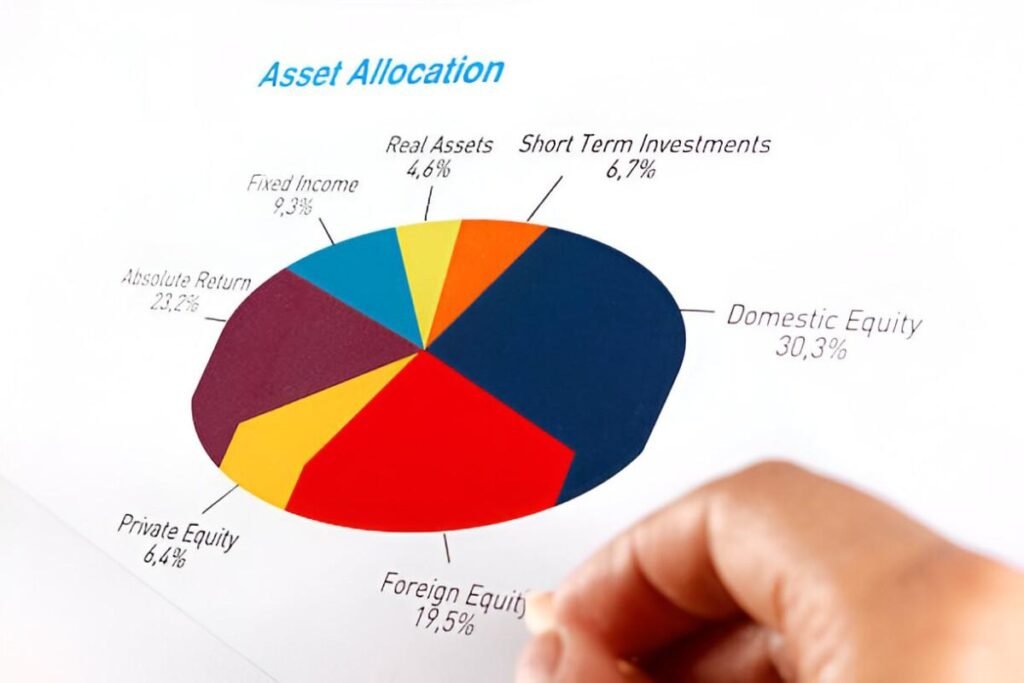As an investor, I understand the need for a diversified portfolio that balances risk and return. One of the most effective ways to achieve this is through an Advanced Balanced Multi-Blend Fund Asset Allocation strategy. This approach combines multiple asset classes—equities, fixed income, real estate, commodities, and alternatives—into a single, optimized portfolio. In this article, I will break down the mechanics, benefits, and mathematical foundations of this strategy, ensuring you grasp both the theory and practical implementation.
Table of Contents
Understanding Multi-Blend Funds
A multi-blend fund is not just a simple mix of stocks and bonds. It is a sophisticated allocation framework that dynamically adjusts exposure based on market conditions, risk tolerance, and investment horizons. Unlike traditional balanced funds, which may stick to a rigid 60/40 stock-bond split, multi-blend funds incorporate a broader range of assets.
Key Components of Multi-Blend Funds
- Equities – Growth-oriented but volatile.
- Fixed Income – Stability and income generation.
- Real Assets (REITs, Commodities) – Inflation hedge.
- Alternatives (Private Equity, Hedge Funds) – Low correlation to traditional markets.
The Mathematics Behind Asset Allocation
To optimize a multi-blend fund, I rely on Modern Portfolio Theory (MPT) introduced by Harry Markowitz. The core idea is to maximize returns for a given level of risk by choosing uncorrelated assets.
Expected Portfolio Return
The expected return of a portfolio E(R_p) is the weighted sum of individual asset returns:
E(R_p) = \sum_{i=1}^{n} w_i \cdot E(R_i)where:
- w_i = weight of asset i
- E(R_i) = expected return of asset i
Portfolio Risk (Standard Deviation)
Risk is measured by standard deviation \sigma_p:
\sigma_p = \sqrt{\sum_{i=1}^{n} \sum_{j=1}^{n} w_i w_j \sigma_i \sigma_j \rho_{ij}}where:
- \sigma_i, \sigma_j = standard deviations of assets i and j
- \rho_{ij} = correlation between assets i and j
The Efficient Frontier
The Efficient Frontier is a curve representing optimal portfolios that offer the highest return for a given risk level.
Strategic vs. Tactical Asset Allocation
| Aspect | Strategic Allocation | Tactical Allocation |
|---|---|---|
| Time Horizon | Long-term (5+ years) | Short-term (1-3 years) |
| Adjustments | Infrequent | Dynamic & frequent |
| Objective | Maintain target mix | Capitalize on trends |
I prefer a hybrid approach: maintaining a strategic core while making tactical shifts when market inefficiencies arise.
Case Study: A Sample Multi-Blend Fund Allocation
Let’s construct a hypothetical portfolio:
| Asset Class | Weight (%) | Expected Return (%) | Risk (σ) |
|---|---|---|---|
| US Large-Cap Stocks | 35 | 8.5 | 15 |
| International Stocks | 20 | 7.0 | 18 |
| Corporate Bonds | 25 | 4.2 | 6 |
| REITs | 10 | 6.0 | 12 |
| Gold (Commodity) | 10 | 3.5 | 10 |
Calculating Expected Return & Risk
Using the earlier formulas:
E(R_p) = (0.35 \times 8.5) + (0.20 \times 7.0) + (0.25 \times 4.2) + (0.10 \times 6.0) + (0.10 \times 3.5) = 6.45\%For risk, assuming correlations (\rho_{ij}) between assets are below 0.5, the portfolio standard deviation would be lower than any single asset’s risk due to diversification benefits.
Rebalancing Strategies
I recommend threshold-based rebalancing, where adjustments occur only when an asset class deviates by ±5% from its target weight. This minimizes transaction costs while maintaining risk control.
Tax Efficiency in Multi-Blend Funds
Taxes erode returns. To mitigate this:
- Place high-growth assets (stocks) in tax-advantaged accounts (IRAs, 401(k)s).
- Hold bonds in taxable accounts if tax-exempt (munis).
Behavioral Considerations
Investors often panic-sell in downturns. A disciplined multi-blend strategy helps avoid emotional decisions by enforcing systematic rebalancing.
Final Thoughts
Advanced balanced multi-blend fund allocation is not a “set-and-forget” strategy. It requires monitoring, mathematical rigor, and discipline. However, when executed well, it provides superior risk-adjusted returns compared to static portfolios.




